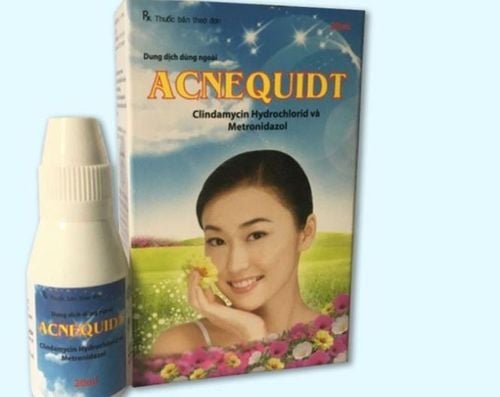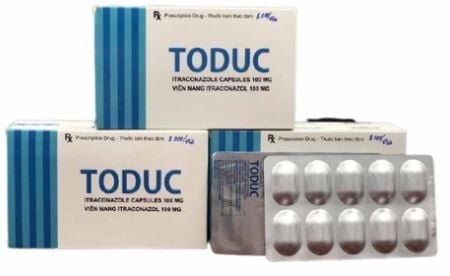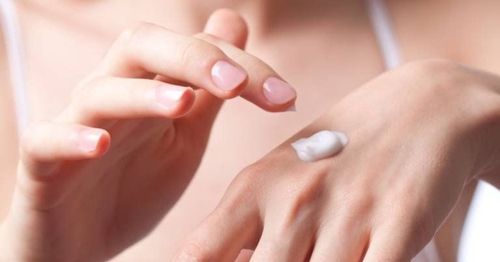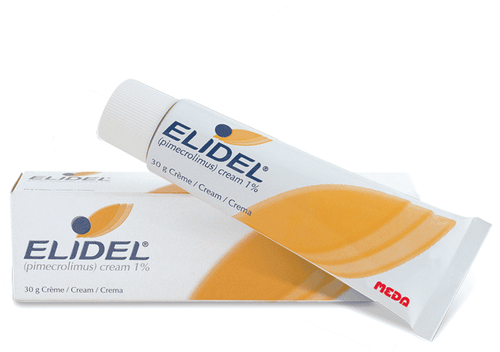This is an automatically translated article.
For most families, summer vacation means a time when the family gets together and enjoys a variety of activities including swimming. If your child spends more time swimming in a lake or pool in the summer, he or she may develop a mild skin infection or rash, commonly known as "swimmer's itch." This condition is caused by small larvae found in some lakes or swimming pools, these larvae are so small that they cannot be seen with the naked eye. When children go out swimming, these larvae can stick to the skin and cause an allergic reaction. Although generally harmless, swimmer's itch can be uncomfortable and last for several days. In this article we will provide useful information for parents who are wary of swimming causing itching in babies and babies.
1. Causes of itching when swimming
Swimming itch, also known as tarsal dermatitis, is an itchy rash caused by a small parasitic worm. Children become infected by swimming or wading in contaminated freshwater lakes, which is rare in saltwater areas.This parasitic worm does not live in the human body, but accidentally burrows into the skin of a child while searching for a new host. Common hosts for the parasite are waterfowl and rodents. During its life cycle, parasitic worms pass into the blood of waterfowl and some animals that live near water. The birds or animals then pass the eggs of the parasites into the water through their feces. When the parasite's eggs hatch in the water, the larvae swim around trying to find their second host, a snail. After the parasite infects the snail and grows in it, the snail excretes a second form of parasitic larva into the water. These tiny larvae, called cercariae, swim around looking for waterfowl or water animals to start the cycle over.
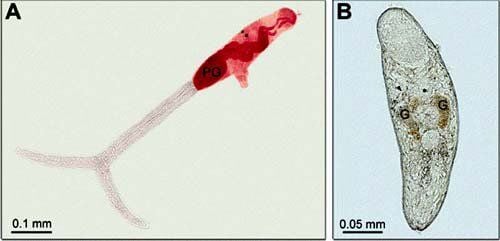
Viêm da nổi mẫn do ấu trùng cercaria gây ra khi bơi lội
These larvae live for only about 24 hours and hunt for suitable hosts to continue their life cycle. These parasites cannot enter the child's bloodstream or deeper tissues, but it can cause an uncomfortable itchy rash when burrowing into the child's skin.
The rash begins to itch and appears as a rash as soon as the child is still in the water. After a few hours, the itching and rash disappear. However, about 10–15 hours after the initial rash, the nodules and itching return. They appear as small, itchy red bumps that can turn into blisters. And it usually goes away within a week.
2. Symptoms
The first symptom is itching or burning on the skin area that is in direct contact with water, the skin covered by clothing is usually not the above phenomenon Appears small, red pimples within the first 1-2 hours, the This pimple turns into small red bumps in 1 or 2 days. These spots can be quite itchy for up to 7 days, the rash gradually disappearing over 2 weeks. Itching is an allergic reaction to the parasite, and the more often a child swims in contaminated water, the worse his symptoms may be. In addition, itching can be caused by some people being more sensitive to parasites.
3. Diagnosing itching in children when swimming
It can be difficult to distinguish itching in children from swimming from other skin reactions, such as insect bites, jellyfish stings, or bacteria. Doctors can only ask you the following questions to help make a diagnosis:
When did the rash start? Has your child been swimming or wading in fresh water recently? Do other people in the water with the child get a rash? Your doctor may also ask about your medical history, any allergies you may have, and the medications and supplements you give your child. If your itching is severe, your doctor may prescribe something stronger than an over-the-counter medication.

Cần phân biệt giữa ngứa do bơi lội với các phản ứng da khác
4. Treatment of itching in children when swimming
For most cases, you can use home treatments to soothe your baby's rash itching. The U.S. Centers for Disease Control and Prevention (CDC) lists several remedies for itching including:
Anti-itch lotion: Buy an anti-itch cream that contains at least 1% hydrocortisone. This medication inhibits inflammatory responses in the body and may help soothe inflamed, itchy skin. This cream should be used for the shortest time (3 times/day) and then discontinued. A high-quality moisturizer that helps retain water in the outermost layer of the skin. This can help make your baby's skin less dry and itchy. Examples of high-quality moisturizers include brands like Eucerin and Cetaphil. Cold compress: Place a cold pack on the most itchy areas. You can also use ice wrapped in a wet towel, and apply it to the affected area for about 20 minutes, 4 times a day. Shower with colloidal oatmeal. Using baking soda or Epsom salt, add them to the water and stir until thickened. Then apply them to the affected area. Itching when swimming in children usually leaves no complications, but the child's skin can become infected if scratched strongly, so remember to cut your child's nails and tell them to try not to scratch too much, which can make the skin condition serious. more important. Steroid creams for itching: To relieve itching, apply a 1% hydrocortisone cream (such as a corticosteroid) to the rash. No prescription required. Use 3 times per day. Baking soda powder is another option. Do this by putting baking soda in a cup. Slowly, add the water and stir until it reaches a paste-like consistency. Place it on the itch as needed. Allergy medicine for itching: For severe itching, use allergy medicine (such as Benadryl). Use 4 times per day. No prescription required. Caution: Do not use if the child is under 1 year old. The reason: Benadryl is a sedative. Call your doctor for advice. Prevents bacterial skin infections.
5. When to contact the doctor?
Need to take the child to see a doctor immediately if the child has one of the following signs :
Widespread red areas or streaks accompanied by fever. Severe itching that does not improve after 24 hours of using steroid cream. Skin infection caused by scratching (with pus or spreading more widely) Itching lasts for more than 2 weeks. The child seems tired.

Khi trẻ xuất hiện triệu chứng bất thường, cha mẹ nên cho trẻ tới gặp bác sĩ để được thăm khám
6. Tips for caring for children with swimming itch
To reduce the risk of swimming itch in children, parents should:
Choose swimming spots carefully: Avoid swimming in areas where swimmers already know itching or have warning signs of possible contamination . Also avoid swimming or wading in swampy areas where snails are common. When swimming in the sea, avoid keeping children in warm water for too long because there are many potential risks for children to have allergies. Rinse with running water immediately after swimming, then pat dry with a towel. Wash swimwear regularly. Wear waterproof sunscreen every time you swim: this has been shown in research to protect against parasites that cause itching while swimming. When the baby shows signs of itching caused by swimming, parents should take the child to a medical facility for examination soon. The Pediatrics Department, Vinmec International General Hospital is one of the few medical facilities with a full range of multi-specialist doctors in dermatology, respiratory, neurological, cardiovascular, digestive... intensive treatment at the most effective pediatric department. If the baby has an itch due to swimming, the doctor will best treat both the pathology and the aesthetic root. The doctors are highly qualified, experienced, and have successfully received and treated thousands of children with swimming itch of all ages.
For children to be healthy and develop well, it is necessary to have a nutritious diet in terms of quantity and quality balance. If children are not provided with adequate and balanced nutrients, it will lead to diseases of excess or lack of nutrients, which adversely affect the comprehensive development of children in terms of physical, mental and motor skills. Parents should supplement their children with supporting products containing lysine, essential micro-minerals and vitamins such as zinc, chromium, selenium, and B vitamins to help fully meet the nutritional needs of children. At the same time, these essential vitamins also support digestion, enhance nutrient absorption, help improve anorexia, and help children eat well.
Parents can learn more:
Signs of zinc deficiency in children
Micronutrient deficiency and failure to gain weight in children
Please regularly visit Vinmec.com website and update useful information to take care of your child. Take care of the baby and the whole family.
References: babycenter.com, childrenscolorado.org, healthline.com, mayoclinic.org




